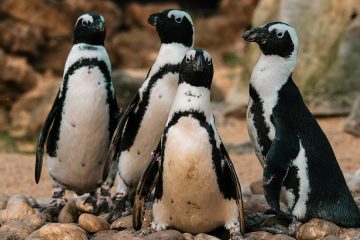The Fascinating World of Monkeys and Their Conservation Needs

Introduction to Monkeys
Monkeys are among the most fascinating and diverse creatures on the planet, playing essential roles in their ecosystems. They are social primates known for their intelligence and behaviour, often captivating the interest of researchers and the public alike. The importance of studying monkeys extends beyond mere curiosity; it involves understanding their ecological significance and the conservation challenges they face in a rapidly changing world.
Diversity of Monkey Species
There are over 260 species of monkeys, classified broadly into two categories: New World monkeys, found in South and Central America, and Old World monkeys, found in Africa and Asia. Each group displays unique characteristics. New World monkeys, such as the capuchin and howler monkeys, often have prehensile tails which allow them to navigate the forest canopy. In contrast, Old World monkeys, including the macaques and baboons, tend to have non-prehensile tails and exhibit complex social structures.
Ecological Role
Monkeys play a vital role in their environments as seed dispersers. Their diets primarily consist of fruits, flowers and leaves, which when consumed, contribute to the regeneration of forests. Additionally, their foraging habits can influence plant communities, promoting biodiversity. Understanding these roles is crucial in fostering habitat preservation and restoration efforts.
Conservation Status
However, many monkey species face severe threats from habitat destruction, poaching, and the illegal pet trade. It is estimated that nearly 50% of all monkey species are at risk of extinction due to these pressures. For instance, the critically endangered Tapanuli Orangutan is a case study illustrating the dire consequences of deforestation in Southeast Asia. Conservation efforts are underway, focusing on habitat protection, anti-poaching measures, and legal frameworks to protect these primates.
Conclusion and Future Perspectives
The fate of monkeys is intricately linked to human activities. As we continue to encroach upon their habitats, it is imperative to advocate for their protection through education, awareness, and proactive conservation strategies. For readers, this serves not just as a call to action but an opportunity to appreciate our bond with these remarkable animals. By supporting sustainable practices and conservation initiatives, everyone can contribute to ensuring that the diverse world of monkeys thrives for generations to come.





